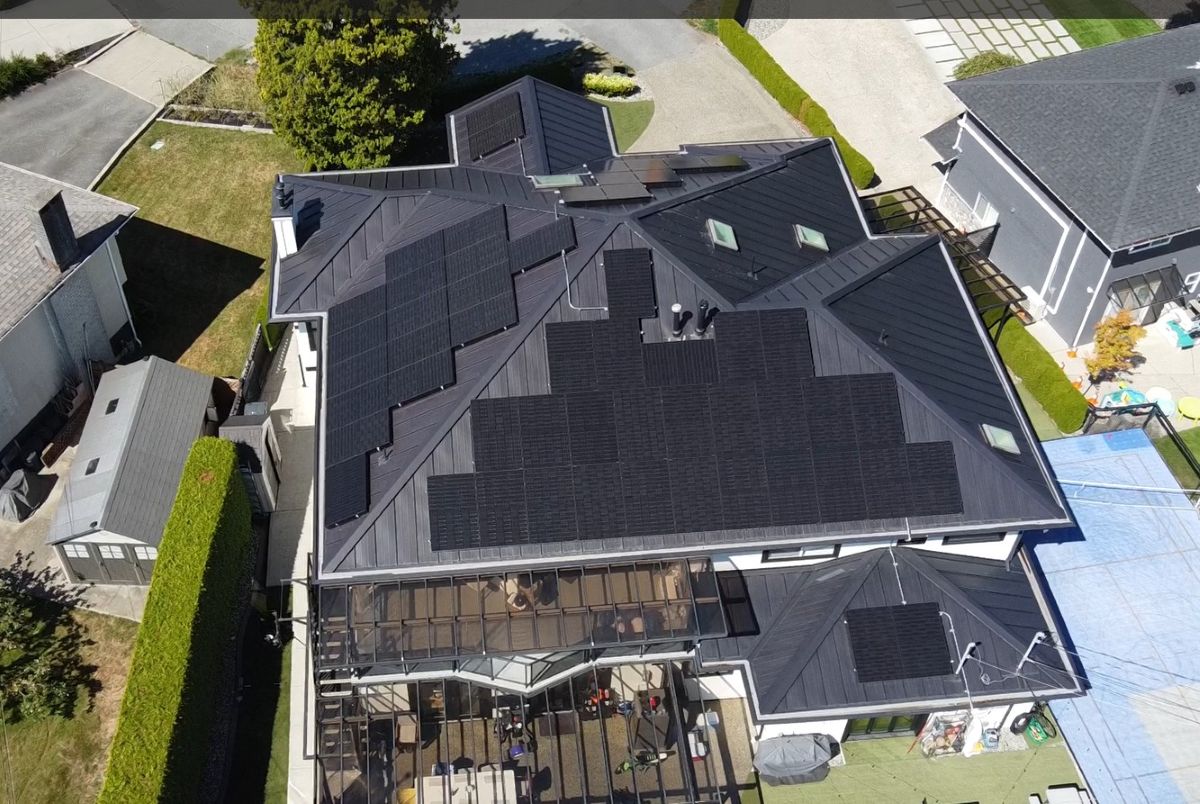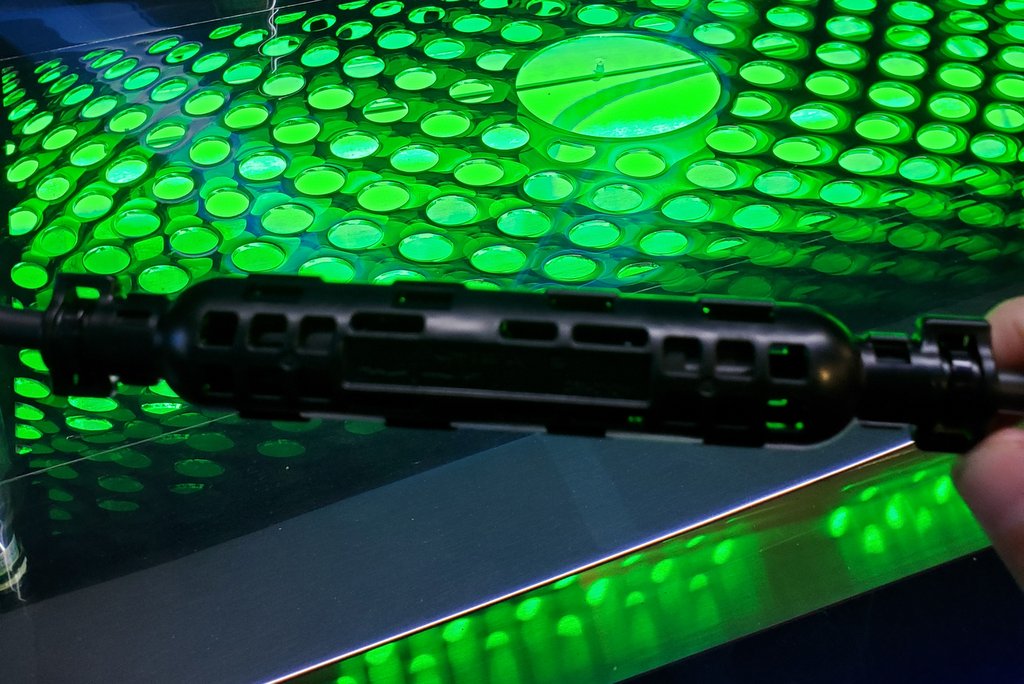Underground Network
Wiring pre-installed in HDPE pipes and installed under a solar farm speeds construction, increases efficiency and extends the solar system’s lifetime.
By Stephen C. Cooper
For solar farms, installers are finding that using underground cable in conduit (CIC) made from high-density polyethylene (HDPE) speeds construction and increases the life of the facility. CIC allows for either open trench or horizontal directional drilling (HDD) to be used.
“Before, most solar farms used underground PVC pipe,” says Doug MacDonald, project engineer for AllEarth Renewables Inc., manufacturer of the AllSun Tracker in Williston, Vt. “Wire is pulled onsite after conduit installation. HDPE conduit saves in multiple ways that include less labor to install. It comes preloaded with the wire, so it’s just a one-step process after digging the trench. It also enables us to use a smaller conduit size, reducing the cost of materials.”
![]() Projects can become very labor-intensive with other types of conduit because a trench must be dug, the conduit installed and a pull rope blown through so the wire can be pulled back through. With HDPE conduit, the wire can be installed while the pipe is being extruded and arrive to the jobsite ready to go.
Projects can become very labor-intensive with other types of conduit because a trench must be dug, the conduit installed and a pull rope blown through so the wire can be pulled back through. With HDPE conduit, the wire can be installed while the pipe is being extruded and arrive to the jobsite ready to go.
“Custom lengths can be ordered and sometimes a single reel will hold thousands of feet, which puts more conduit at the site to further expedite installation,” says Tony Radoszewski, executive director of the Plastics Pipe Institute Inc. (PPI), the major trade association representing all segments of the plastic pipe industry. “Installing the cable in the conduit at the factory ensures that a clean and damage-free cable is delivered to the field. CIC also eliminates the added expense of pulling the cable onsite under muddy and dusty field conditions which aren’t the best for a good, clean installation.”
AllEarth has used CIC on a number of projects, including a ski resort and a youth center, with future projects in the works. In 2011, the company built a large solar farm and decided to locate power and control cables in underground CIC conduit made from HDPE as a way to increase the life of the facility. The 2.2-MW solar farm in South Burlington, Vt., covers 25 acres and includes 382 AllSun Trackers. All low voltage wiring used UL-1990 certified CIC provided by Blue Diamond Industries of Lexington, Ky. Blue Diamond is a member company of the PPI.
The AllSun Tracker conduit included nearly 70,000 ft of 3/4-in. CIC pipe with three 6AWG cables — black, green and white — and 5,000 ft of 2.5-in. diameter CIC with 4/0 wiring for the panel feeder lines. Blue Diamond supplied CIC on reels ranging from 2,000 to 10,000 ft. The company is listed by UL for specification UL 1990, Nonmetallic Underground Conduit with Conductors and its CIC is manufactured under ASTM D 3485.
Total power produced by the South Burlington Solar Farm is estimated to be approximately 3,000,000 kWh a year. The project is owned and operated by the Chittenden County Solar Partners. The value of the electricity generated by the farm has been tagged at $924,000 a year and is enough to power more than 400 homes.
While most of the installation was accomplished using cut and cover, the HDPE cable in conduit product also provided the solution to go under a heavily forested section of private property and a section of wetland.

Nearly 70,000 ft of CIC was provided by Blue Diamond Industries for the 2.2-MW solar farm in South Burlington, Vt.
“We directionally drilled two, 400-ft runs of 5-in. diameter HDPE pipe used for the main power feed and communication cables,” explains Aaryn French, project manager for Engineers Construction Inc. of Williston, Vt.
French agrees that having CIC was a benefit. It took his four-person crew just a month to dig all the trenches and install the low- and medium-voltage conduit at an average depth of 3 ft. “The trenching, which was the majority of the work, went very smoothly. The conduit was nice because we’d just start pulling the wire out and leave the proper length at the end and just lay it right in the ground. This was more efficient than using sticks of PVC — probably five to 10 times faster,” French says. “And because we had the cable already in the conduit, it saved us a lot of time. We were killing two birds with one stone — installing the pipe and wire at the same time. That was a huge benefit.
“This is probably one of the biggest applications of using CIC in this specific manner. In this application it was cost efficient, time efficient and it just worked really well,” French continues. “That’s because we weren’t trying to put together PVC, and putting a pull string in and pulling the wire. This was a one-shot deal. You complete the trenching, you know your two end locations, tie it in, backfill and you’re done.”
Another installer, Dan Sabia, president of Built Well Solar on Long Island, N.Y., says that the CIC helps his crew with cable runs especially on commercial and school buildings. “We find that on some of our larger jobs, the cable in conduit can be used to run the lines from the panels on the roof to the inverter which can be even hundreds of feet away. Plus, because the wire is fully incased in the conduit, it will be protected from the elements for a very long time.”
“From a sustainability standpoint, HDPE pipe and solar power are a unique partnership,” states PPI’s Radoszewski. “Like solar, a plastic pipe system is a sustainable and environmentally responsible choice that will serve generations to come. The HDPE conduit is ecologically efficient during manufacturing. The conduit is also strong, durable, light-weight and flexible while providing excellent protection for the power and fiber cables inside, and requires significantly less energy to fabricate, transport and install than other pipe products. And in Vermont for example, HDPE conduit is the perfect choice to stand up to the extreme cold weather and frozen earth, plus it was the key to a successful trenchless run in one section.”
Stephen C. Cooper reports on industry activities for SCA Communications based in New York. For more information about PPI, visit plasticpipe.org.



Comments are closed here.